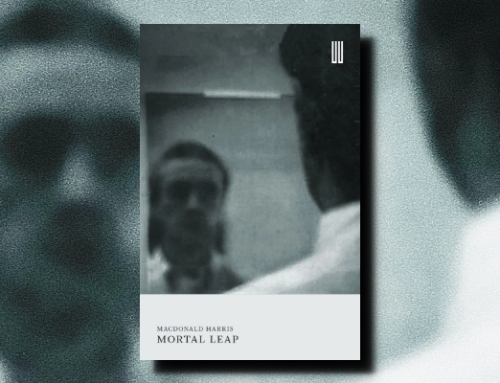This Cake Is for the Party by Sarah Selecky (2010) Thomas Allen Publishers (2010) 224 pp
For me, stop number three of the Giller shortlist is the second collection of short stories, This Cake Is for the Party, Sarah Selecky’s debut. As I said when reviewing Alexander MacLeod’s debut, Light Lifting, debut short story collections are tricky things. The short story, as a form, is quite different from a novel, but many young authors seem to write short stories as primers for novels. They become apprentice pieces, a way to experiment without commitment, a way to rid oneself of some self-indulgent autobiographical drivel. Often they feel formulaic. Unfortunately, This Cake Is for the Party felt this way to me, though I know others out there feel differently.

This collection contains ten short stories, and, though I’m not saying each is autobiographical, each has that generic MFA feel. Most of the characters are women in their late twenties or early thirties, they are involved in writing projects or the academy, they like to cook Italian food, they are involved in relationships that are leading to more serious commitments than they are used to, they are thinking about children. Now, all of these have made for great stories and novels in the past, and to be sure these stories are not poor; they are just familiar.
For example, the first story, “Throwing the Cotton,” involves two married couples. They all met during university at Trent some years before. Anne, the female narrator, is married to Sanderson, who was her professor at Trent. The other couple is Shona and Flip; they, more conventionally, were both students. For years they and their single female friend Janine have been spending the long May weekend at a cottage by a lake. Sandy has brought along a stack of first-year composition papers to grade. It’s a story about fidelity, and we know early on, before it has been disclosed, who is sleeping with whom and where the story is going. Sandy wants to have a baby, has been prepared since Christmas, but this weekend complicates her plans.
Maybe I was in a grumpy mood — if so, certainly “Throwing the Cotton” didn’t help — but for the next couple of stories I was really put off by the collection. If the content of the stories felt familiar, so did the technique. The pacing seemed to be controlled by a familiar mode — character detail, line of dialogue, character detail, line of dialogue, etc. — that when used over and over eventually felt as rhythmical as water torture. While it is true that every writer uses techniques for character development and pacing, sometimes it feels natural and sometimes it feels mechanical. Here it felt mechanical. I don’t recall the last time I thought it felt so deliberate, as if the story itself had no heart of its own.
Seeing that if I kept reading with that attitude I would not read each story on its own but rather would only look for faults, I decided to stop for a bit to clear my head. I’m happy to say that when I came back to the collection, I was in a better mood, and hopefully a bit more fair. While I didn’t love any of the remaining stories, I was definitely getting through them with more pleasure. Perhaps they were better stories, but I’m inclined to think it was my change in attitude.
I was particularly refreshed when I read the beginning of “Prognosis.”
Dear Mrs. B —– ,
Twenty years have passed since we have spoken. I know you haven’t always agreed with our lifestyle, but I was surprised when your letters stopped entirely. It’s been almost a decade. Your unwillingness to argue about our life decisions in recent years led me to believe that you were either resting comfortably in a divot of calcified judgment or that you had finally made peace with our choices. I had hoped it was the latter, but I just discovered that your silence was more menacing than I had feared. Your resentment is palpable and extraordinary, and it has tested the architect of my marriage. I don’t know what has been more distressing — having to justify our modus vivendi every time I was in contact with you, sensing your disapproval from a distance during these years of silence, or learning that you have actually been in contact with my husband all this time.
This story is, as it appears, a long letter, and it is full of intrigue. Again, I didn’t love the story. Much of the time we know that the information is not being written for Mrs. B —– , but for us readers. That felt a bit clunky. Still, I think the passage above shows that, on sentence by sentence level, Selecky is a good writer. In other words, the sentences themselves are not the problem. It’s the generic stories and the mechanical superstructure.
I’m sad to say that this collection of short stories, for me, represented what I consider to be a problem with writing programs, whatever their benefits. The stories revolve around a similar type of person — those thirty year old writers who have spent the last ten years in writing programs, now teaching in them and engaging in a world of new commitments; they are relatively poor but still interested in fine cuisine. Obviously, this is an over generalization, but several specimens, including this one, fit.








As the writer of something odd, I especially loved your phrase “that generic MFA feel”!
There is, definitely, a formula, isn’t there.
This certainly is not the book for you, Shelley.
[…] the Mookse and the Gripes has passed the halfway point of the Giller shortlist with his review of This Cake is for the Party by Sarah Selecky. Here are his opening paragraphs: For me, stop number three of the Giller […]
[…] two reviews in particular to be rather disagreeable. I was drawn to the Giller reviews by Trevor at The Mookse and The Gripes and to KevinFromCanada because they had both also reviewed Alexander MacLeod’s Light Lifting, […]
[…] with Giller shortlisted story collection This Cake Is for the Party, by Sarah Selecky (my review here). In the acknowledgments page of this year’s third story collection, Better Living […]
[…] flashbacks of another Canadian short story collection: This Cake Is for the Party (my thoughts here). I’m afraid that I can’t say, at this point, that my worries were unfounded. I found […]